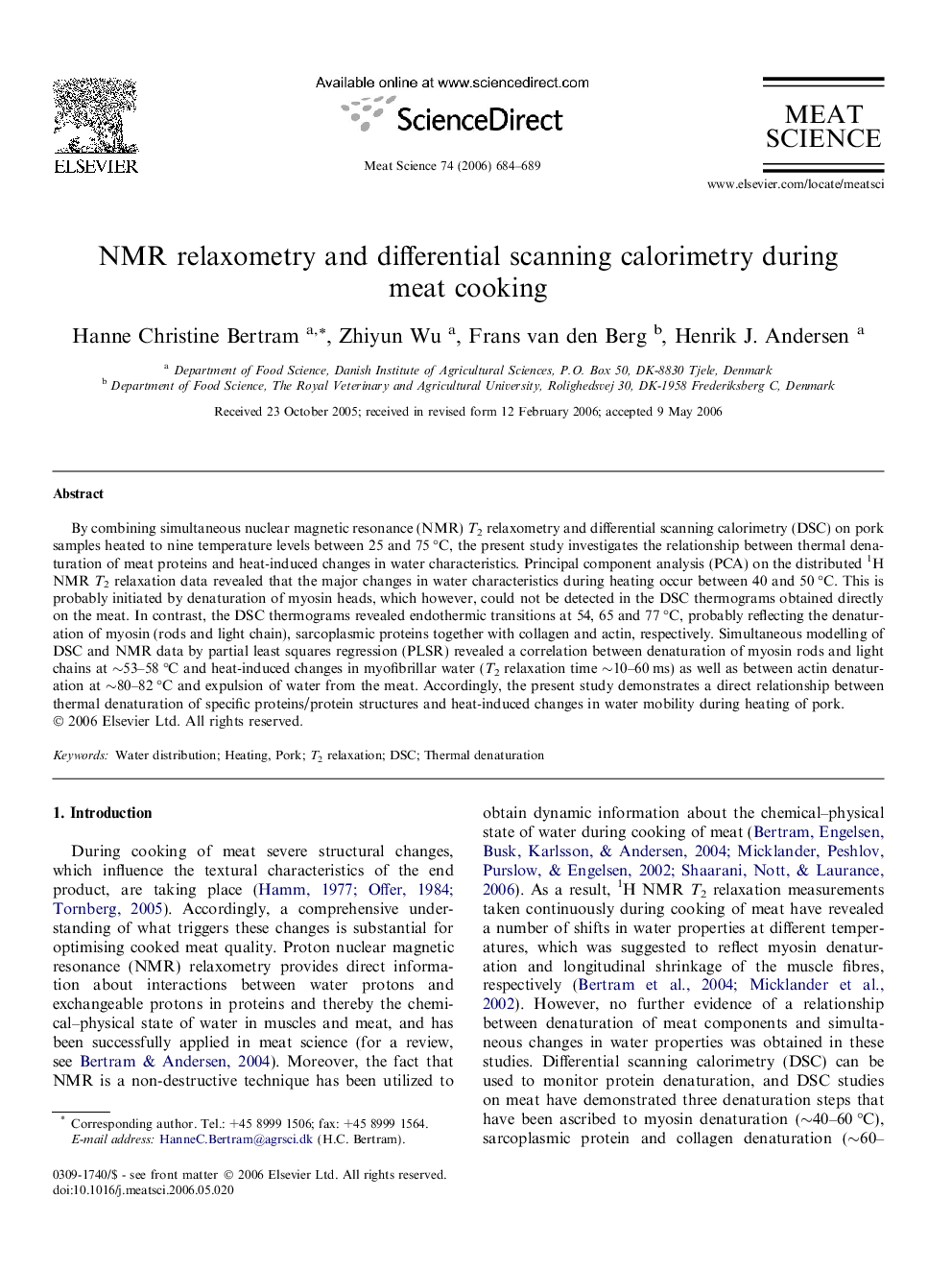| Article ID | Journal | Published Year | Pages | File Type |
|---|---|---|---|---|
| 2451943 | Meat Science | 2006 | 6 Pages |
By combining simultaneous nuclear magnetic resonance (NMR) T2 relaxometry and differential scanning calorimetry (DSC) on pork samples heated to nine temperature levels between 25 and 75 °C, the present study investigates the relationship between thermal denaturation of meat proteins and heat-induced changes in water characteristics. Principal component analysis (PCA) on the distributed 1H NMR T2 relaxation data revealed that the major changes in water characteristics during heating occur between 40 and 50 °C. This is probably initiated by denaturation of myosin heads, which however, could not be detected in the DSC thermograms obtained directly on the meat. In contrast, the DSC thermograms revealed endothermic transitions at 54, 65 and 77 °C, probably reflecting the denaturation of myosin (rods and light chain), sarcoplasmic proteins together with collagen and actin, respectively. Simultaneous modelling of DSC and NMR data by partial least squares regression (PLSR) revealed a correlation between denaturation of myosin rods and light chains at ∼53–58 °C and heat-induced changes in myofibrillar water (T2 relaxation time ∼10–60 ms) as well as between actin denaturation at ∼80–82 °C and expulsion of water from the meat. Accordingly, the present study demonstrates a direct relationship between thermal denaturation of specific proteins/protein structures and heat-induced changes in water mobility during heating of pork.
